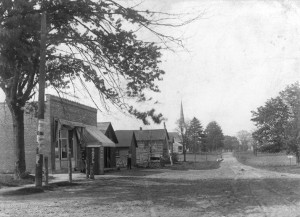
On the Road Again – Part I
Perhaps you’ve heard the news: Interstate 75 gets a makeover in Oakland County! Extra lanes, modernized ramps, reconstructed overpasses, new drainage, the works. Michigan’s longest route-numbered highway will be quite the looker indeed…by 2030.
While we’re waiting, let’s enjoy some 19th century highway history:
Early 1800s
Under Michigan’s territorial government, townships of the early 1800s were responsible for constructing and maintaining their own roads. This was done by a system of statute labor in which all able-bodied men were required to work a certain number of days each year developing roads. No experience was necessary and no training was given, because basically anyone could build a road back then. Maybe not well, but byways were constructed nonetheless.
Mid-1800s
The middle of the 19th century marked the plank road boom, with Michigan being the first state to grant road-building charters to private companies like the Detroit, Plymouth and Ann Arbor Turnpike Company (1837). By 1848, so many companies were requesting charters that Michigan passed the Plank Road Law, which allowed any company to build a turnpike—sans State charter. The legislature did set the toll rates, however; drivers paid based on the number of horses drawing their carriages or how much livestock they transported on these routes.
Late 1800s
Plank roads were a nice improvement…for three or four years after they were built. But then they needed frequent maintenance. They soon became plank-and-gravel roads as the wood decayed or warped and gaps were filled with less-costly gravel, creating a washboard-like driving surface. Mark Twain’s impression of the Kalamazoo and Grand Rapids Plank Road was that “It would have been good if some unconscionable scoundrel had not now and then dropped a plank across it.”
Later 1800s
For bicyclists (and other travelers) who wished to remain upright, road conditions at this time were often less than ideal. Advocacy for better roads was led by the League of American Wheelmen, a national bicycle-riding group based in Rhode Island. Their “Good Roads Movement” focused mainly on the United States’ abysmal country roads, which were apt to become wheel-trapping mud slogs in foul weather.
Turn-of-the-century
The rapidly growing popularity of the automobile in the early 1900s meant that a new group would take over the good road lobby. On the Road Again – Part II (next month) will feature twentieth century street stories—auto trails, trunk lines, tarmac and more!







